Order Sphenisciformes Genus Eudyptes Higher classification Crested penguin | Phylum Chordata Family Spheniscidae Scientific name Eudyptes pachyrhynchus Rank Species | |
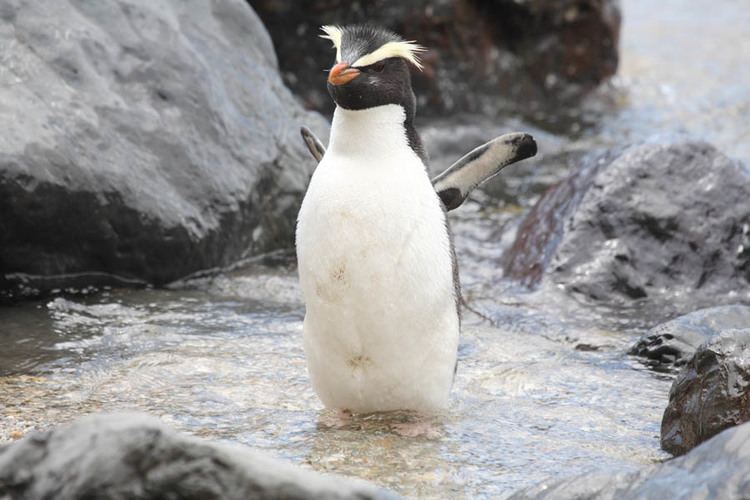 | ||
Similar Crested penguin, Penguin, Erect‑crested penguin, Snares penguin, Bird | ||
The Fiordland crested penguin (Eudyptes pachyrhynchus), also known as tawaki (Maori), is a species of crested penguin from New Zealand. It breeds along the south-western coasts of New Zealand's South Island well as on Stewart Island/Rakiura and its outlying islands.
Contents
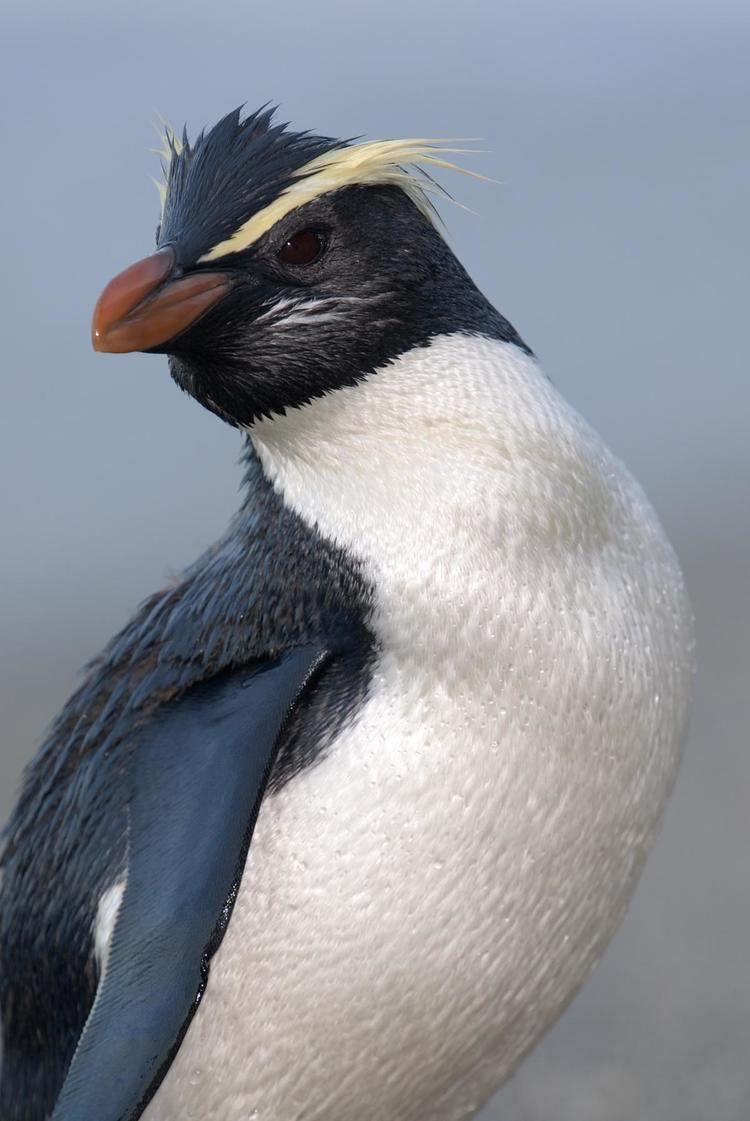
Taxonomy
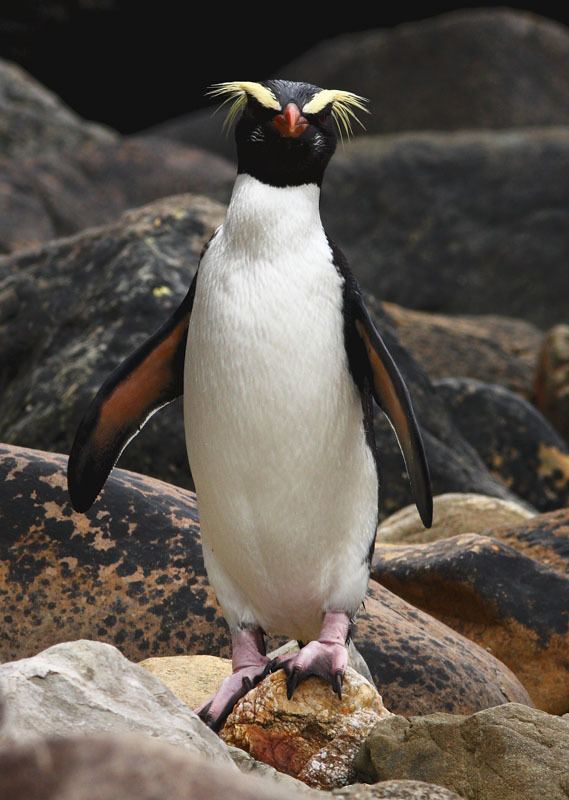
Also known as the Fiordland crested penguin, the Fiordland penguin was described in 1845 by English zoologist George Robert Gray, its specific epithet derived from the Ancient Greek pachy-/παχυ- "thick" and rhynchos/ρύγχος "beak". It is one of six species in the genus Eudyptes, the generic name derived from the Ancient Greek eu/ευ "good" and dyptes/δύπτης "diver".
Description
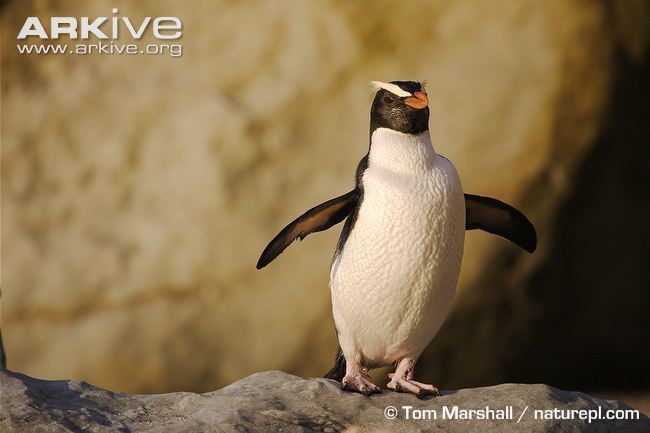
They are medium-sized, yellow-crested, black-and-white penguins, growing to approximately 60 cm (24 in) long and weighing on average 3.7 kg (8.2 lb), with a weight range of 2 to 5.95 kg (4.4 to 13.1 lb). It has dark, bluish-grey upperparts with a darker head, and white underparts. It has a broad, yellow eyebrow-stripe which extends over the eye and drops down the neck. Most birds have three to six whitish stripes on the face.
Distribution and habitat
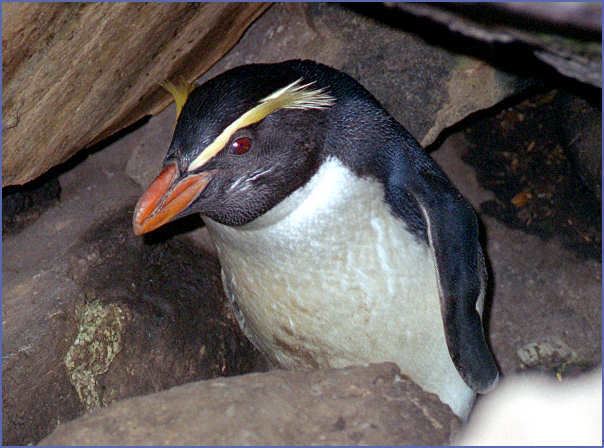
This penguin nests in colonies in dense temperate forest. It breeds along the shores of Southwestland, Fiordland and Stewart Island/Rakiura and its outlying islands.
Diet
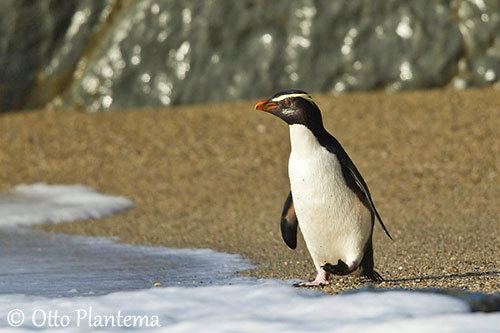
The main prey species reported for Fiordland penguins are cephalopods (85%, mainly arrow squid, Nototodarus sloanii), followed by crustaceans (13%, primarily krill, Nyctiphanes australis) and fish (2%, mainly red cod and hoki). However, the importance of cephalopods might be exaggerated.
Conservation
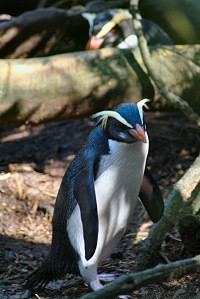
The current status of this penguin is threatened due to its small population. Current population estimates range between 2,500–3,000 pairs although this is believed to be an underestimate of the true population size. The population at some sites reportedly underwent declines while at others penguin numbers apparently increased; overall population trends remain unclear. It is under threat from introduced predators including dogs, cats, stoats and rats.
